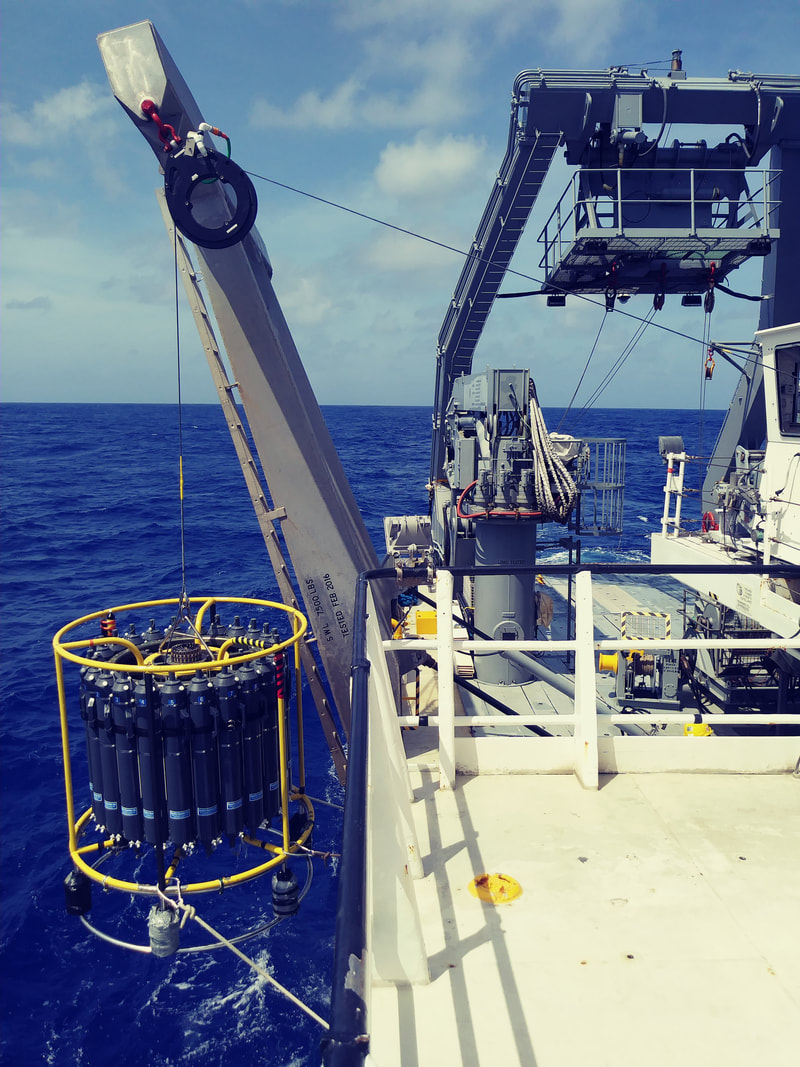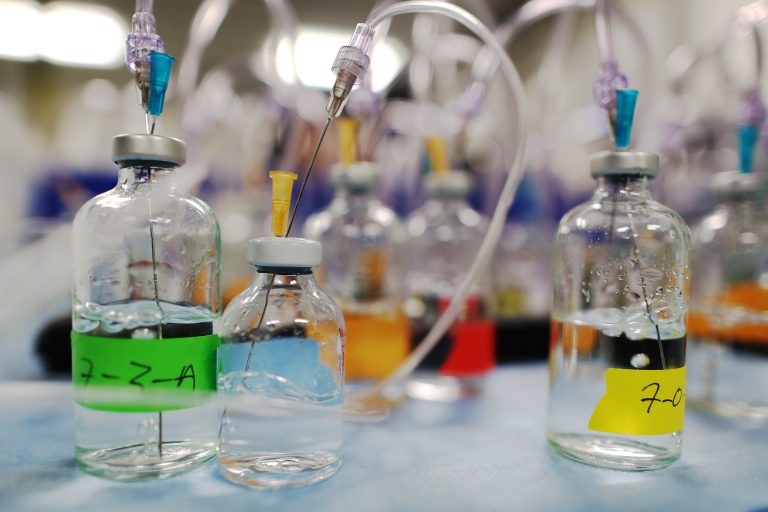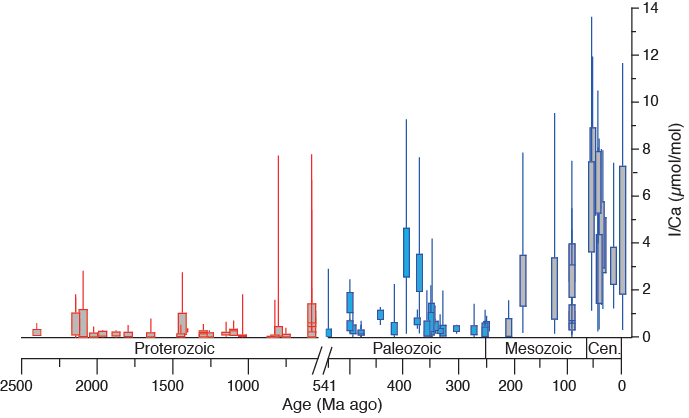Research
Sunset off the Bermuda coast on the RV Atlantic Explorer in Sept. 2018. The incubation chamber in the foreground circulates surface waters to maintain similar conditions for incubation bottles hosting seawater and chemical controls to constrain iodine redox dynamics.




